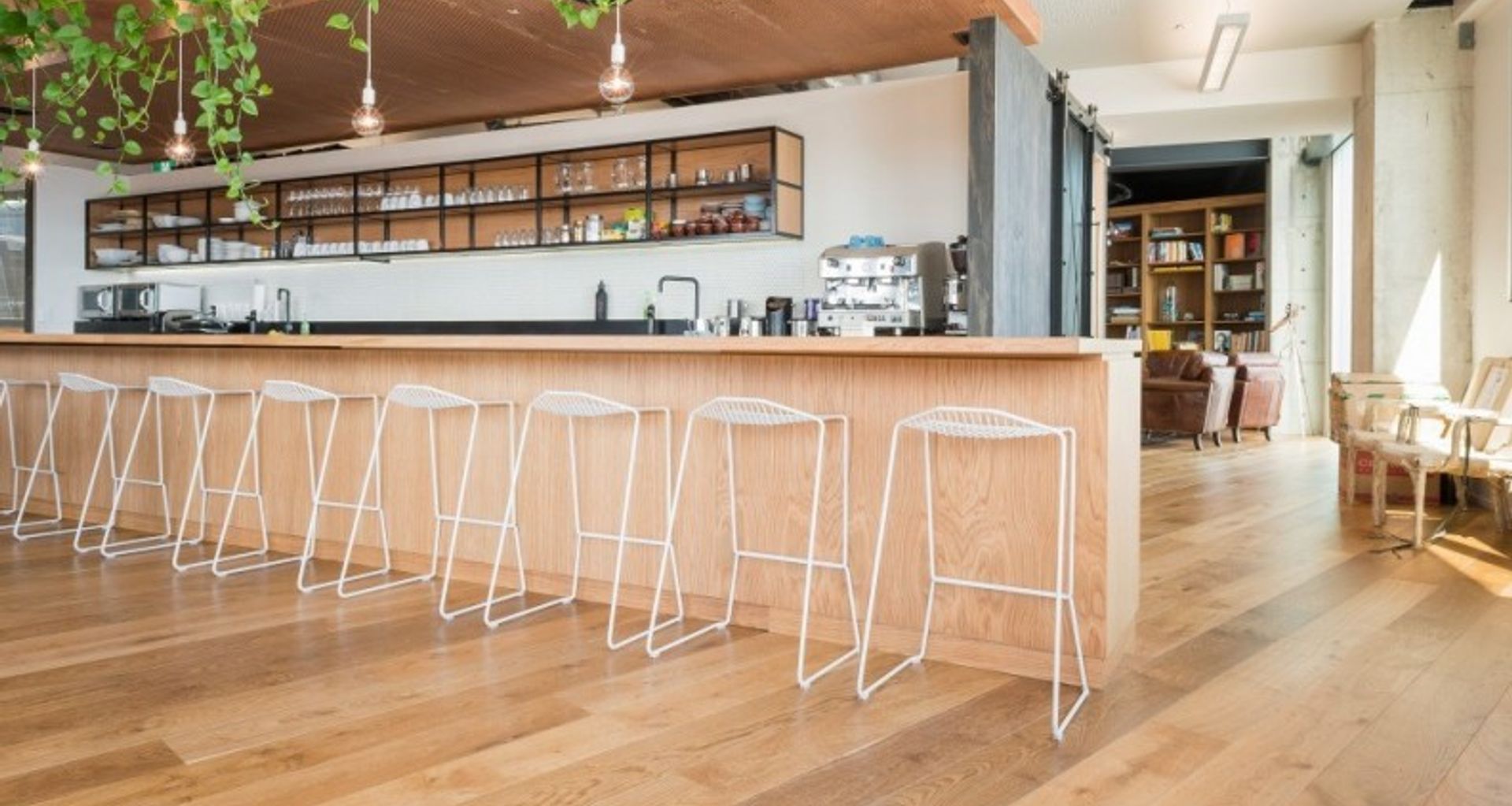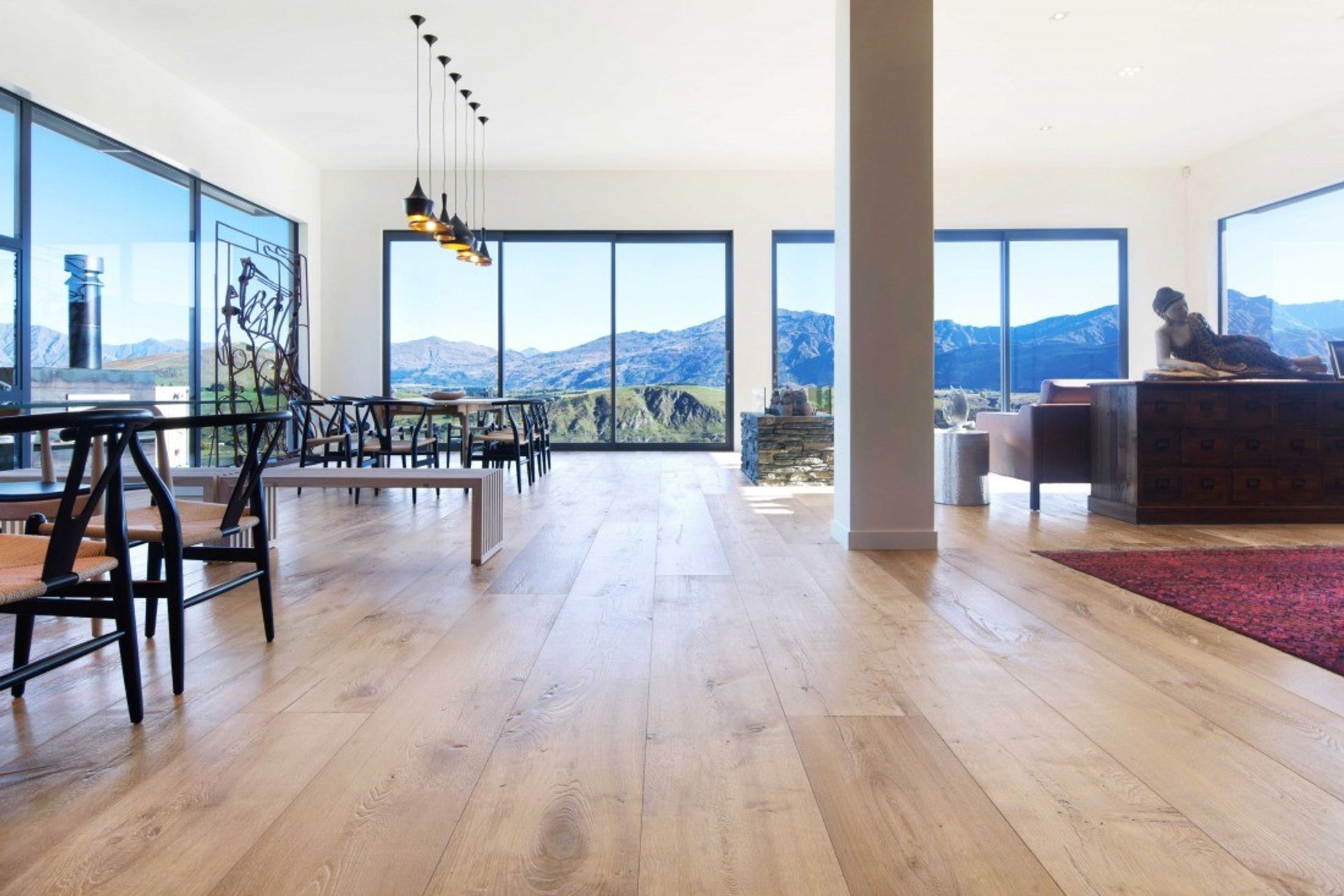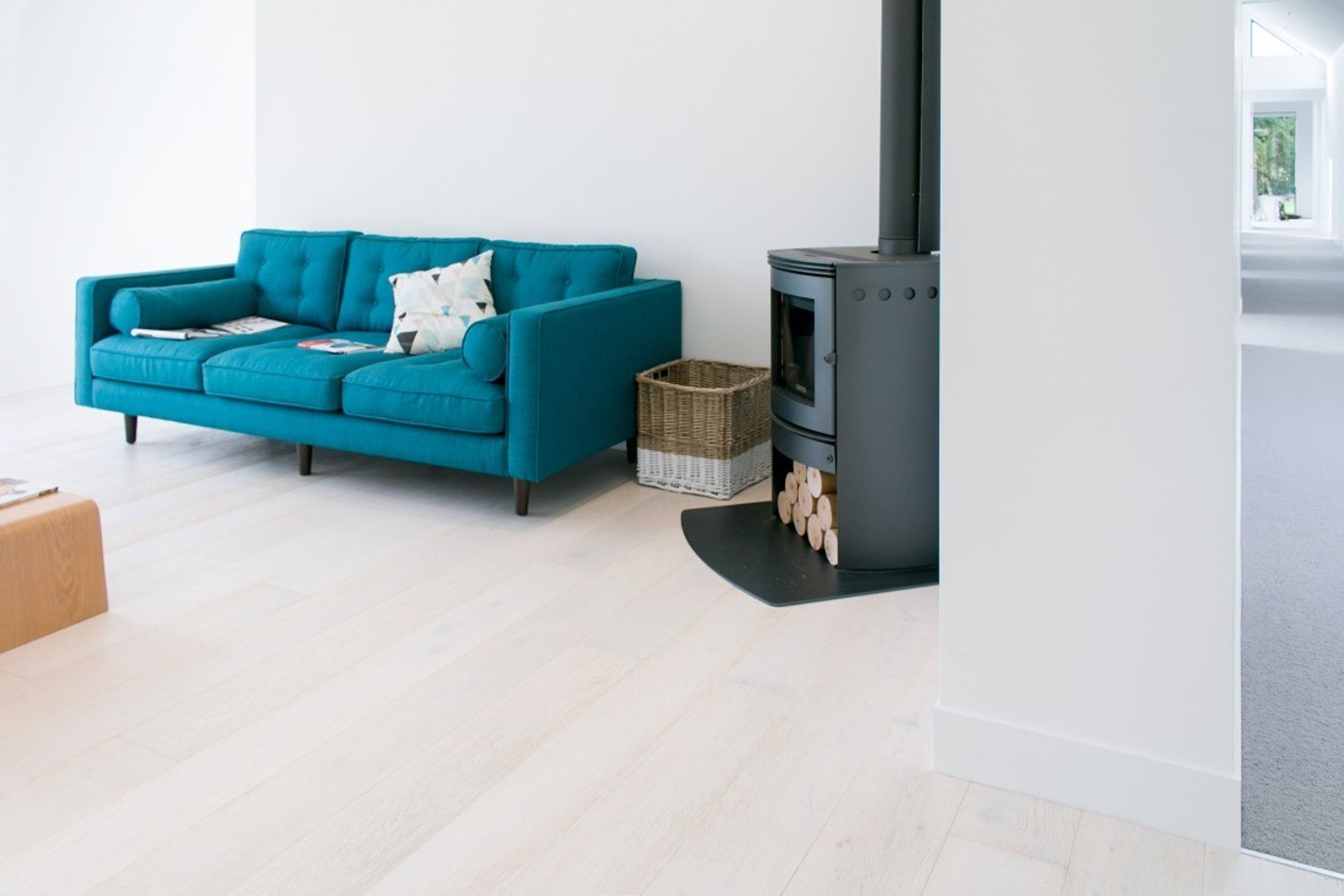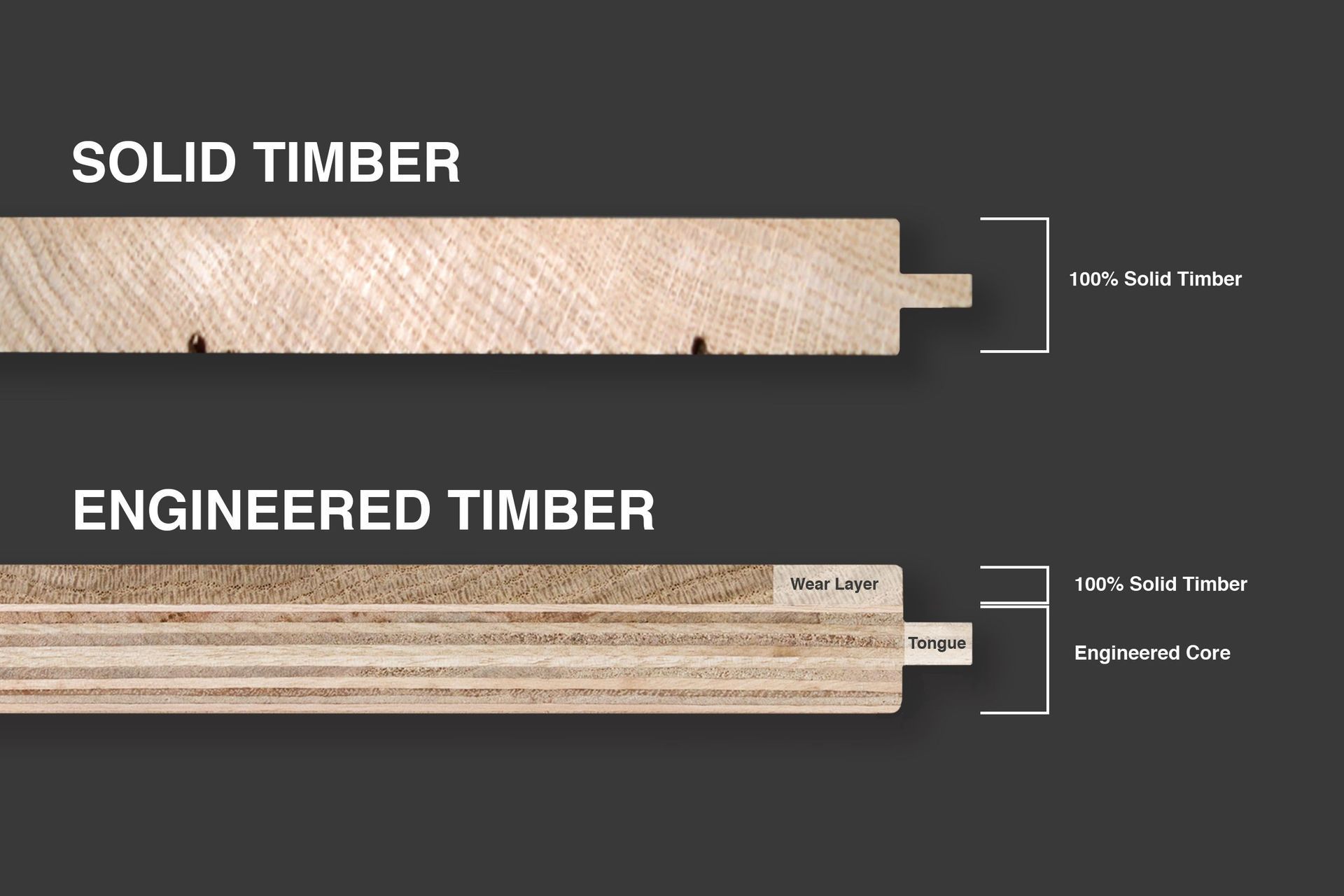Solid timber vs engineered: what should I choose?
Written by
12 April 2017
•
8 min read

How is the structure of engineered timber flooring different from solid timber flooring?
Solid timber flooring is 100% solid hardwood right the way through the plank. In comparison, Engineered timber flooring has a top layer of hardwood timber veneer, which has been glued and pressed onto the top of an engineered core. The core is the base that makes up the rest of the flooring plank apart from the veneer. The core’s composition can vary widely from brand to brand but is generally made up of either a hardwood and/or soft plywood, with the best-engineered wood floors having between 6 and 12 multi-ply layers that are glued cross-directionally and pressed together.
Wear layer explained
The tongue and groove (or locking joint system in some floors) are what hold the flooring together when it is laid. The wear layer, as illustrated in the diagram, is the area of hardwood that is LOCATED ABOVE THE TONGUE. With any timber floor, you can only sand back to the top of the tongue or joint system – any further and the floor will have nothing to hold it together. In that case, it doesn’t matter what is below the tongue, it is never going to be visible – and therefore why not have an engineered floor?
With an engineered floor, you are helping to conserve precious hardwood timber by using only approx one third as much as you would with a solid timber floor.
Engineered floor wear layers vary in thickness between brands. Wear layer thickness directly affects the number of future resands your floor will be able to take – The thicker your wear layer, the more resands. The general rule of thumb is to allow 1mm per resand, plus 1mm or so for a buffer zone. A 6mm wear layer (the closest equivalent to a solid timber floor) should take between 4 to 5 resands, while a 3mm wear layer should take 1-2 resands, and so on. Note that products with thicker wear layers also tend to be more expensive, so if you have a smaller budget you may choose a thinner wear layer.
What are the benefits of engineered timber flooring?
More stable than solid timber flooring
The greatest benefit of engineered timber flooring is increased resistance to higher and lower moisture levels than solid wood flooring, which means it is much less susceptible to shrinkage, warping or cupping. This makes it perfect for New Zealand’s humid climate conditions!
Can be glued down*
Just like solid timber flooring, most engineered timber floors can be direct glued down over dry concrete slabs or a wooden subfloor. *Disclaimer: Please check with the manufacturer to ensure what installation methods are suitable for your flooring.
Will give you the look and feel of a solid timber floor*
If the floor is installed as you would a solid floor, it will also feel just the same as a solid timber floor to walk on. Once installed, the base layer is hidden underneath the floor and nobody will know that it is not a solid timber floor. It will add the same resale value to your home.
Many options available
Just like solid timber flooring, engineered flooring is available in a number of different widths, lengths and thicknesses. It is also available pre-finished, eliminating the need for sanding and finishing on site and meaning your floor is ready to use much quicker!
Uses less precious hardwood resources
Most engineered flooring uses approximately one third of the amount of solid hardwood resource compared to solid timber flooring. Therefore, engineered flooring is helping to conserve our precious hardwood resources!
Products to suit most budgets
Engineered flooring is now very comparable in price to solid timber flooring of equivalent thickness. Thickness directly affects the price of engineered flooring and it is also available in thinner options for those with a smaller budget.

Faster to install
Engineered flooring is almost always machined to a higher standard that solid timber flooring, with joint profiles for the most part being highly consistent. The boards are usually pretty straight too, and the tongue and grooves tend to maintain their size well due to being engineered so they do not swell with moisture. Therefore engineered boards usually fit together very smoothly.
On the other hand, solid timber is often difficult to install due to lower tolerances in the machining which leads to variances in joints profiles. Also, boards can take up moisture, causing the joints to swell and/or causing bowing or cupping to the whole length of the board. This is not always the case but when it does happen it can make the floor very difficult to install.
Less wastage
With any engineered flooring, you should be able to use every piece of flooring that you buy as it has been strictly graded and should have no structural defects or characteristics outside of the grade that you ordered. However, with solid timber flooring, there is always a percentage of product that is not usable, due to cracks or loose knots, or other structural defects.
Things to be cautious of before buying engineered flooring
Price vs quality
As with most products in the marketplace, there are some good brands and some really bad brands. Generally, you get what you pay for – so if an engineered floor is unusually cheap, it is probably poor quality. Try to buy from a reputable store that has been in the industry for a reasonable amount of time and has a wealth of knowledge on the product, rather than a cheap importer who is here today, gone tomorrow and can’t help you with product information.
Compare apples with apples
If you are looking at a number of different products, ensure you are taking into account the plank thickness and width, and wear layer – thinner, narrower planks will usually be cheaper but that is because they take fewer resources to make, they are not necessarily a bargain. Remember not to judge solely on price, but to compare the quality also. Check the makeup of the core – a 6-12 layer cross-directional ply will be more stable than a 3-layer product.
Check the warranties
Check that the product has a warranty. Often this will tell you a lot about the quality of the product – Poor quality products usually have shorter (or nonexistent) warranties, while good quality products should have a longer warranty.
For pre-finished engineered floors:
Check that the floor will not need further finishing after installation. Some suppliers cheat customers into thinking their flooring is pre-finished when it is really only partially finished and will require a final finishing coat after installation. This means the supplier is able to give you a cheaper price but in the long run, it may end up more expensive (and time-consuming) than a fully-finished floor.
Be cautious of pre-finished natural oiled floors. Although they have a beautiful matte finish, most require regular maintenance oiling, a fact which some suppliers fail to advise the consumer at the point of sale. If left untended they can dry out and crack, and are then ruined. For this reason, we do not supply them.
How to choose the right engineered flooring product for your project
The first step to working out what product you need is to assess your budget and also check if there are any height requirements for the situation it will be used in and the intended installation method.
Budget:
Generally the thicker the product (and wear layer), the more expensive it will be. If you’re on a tight budget a thinner flooring option will be a more affordable option. If your budget is unlimited, the world is your oyster – you could get the thickest flooring available, in the widest plank and with the biggest wear layer, giving you more resands.
Height requirements:
In some situations you there may be a height requirement you need to meet – it is wise to always check with your builder on this. For example, if you are overlaying the flooring on an existing surface and need to minimise thickness you may require a thinner product like a 15mm option. On the other hand, if laying over joists, you will need a thicker option such as 21mm to ensure ultimate stability.
Intended installation method:
We usually recommend timber flooring to be installed using the direct-stick method, as it gives a firmer feel underfoot and eliminates any hollow noise. Most flooring can be direct-stuck regardless of joint system (tongue & groove or locking joint), although please check with the manufacturer. However, in some places, installers prefer to float flooring over an underlay – in which case your flooring will need a locking joint system.
Personal preference:
From here it all comes down to personal preference – what colours are available, whether you like the idea of a solid-equivalent thickness of floor, what plank width you prefer, etc.
Choosing an installer
Almost more important than the product you choose, is the person you choose to install it. Installing an engineered floor is a tricky task and we highly recommend you get a skilled flooring installer to do the job. No, not your builder – even if he thinks he can do it! Most reputable suppliers will be able to recommend a good installer for their product. If not, you could try looking online – be sure to check for positive reviews. The ultimate is an installer that is approved by the ATFA (Australasian Timber Flooring Association), as they will have done the required training to become a master at flooring installation.
Good luck in choosing your new engineered timber flooring!

